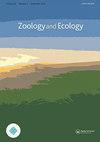Mosquitoes as a potential vector for the transmission of the amphibian chytrid fungus
Q4 Environmental Science
引用次数: 6
Abstract
The amphibian chytrid fungus, Batrachochytrium dendrobatidis (Bd), is an infectious disease responsible for the worldwide decline of amphibian species. To mitigate these declines, it is necessary to identify the various vectors by which the fungus can be transmitted between individuals and populations. The objective of this study was to determine whether adult female mosquitoes can carry and transfer Bd fungal cells. Mosquitoes were exposed to netting soaked in a live Bd zoospore suspension to determine whether they are able to externally acquire the fungus. Another group was placed into containers with a sterile and Bd-inoculated agar plate to determine whether mosquitoes could transfer Bd between these surfaces. Bd DNA was found to be present on mosquito legs exposed to inoculated netting and agar plates suggesting that Bd can be transmitted by the mosquito over short distances. This is the first study to demonstrate that an insect host may be a mechanical vector of Bd and suggests that we should begin to consider the role of mosquitoes in the dissemination and control of the fungus.蚊子是两栖壶菌传播的潜在媒介
两栖动物壶菌Batrachochytrium dendrobatidis(Bd)是一种导致全球两栖动物物种减少的传染病。为了缓解这种下降,有必要确定真菌在个体和种群之间传播的各种媒介。本研究的目的是确定成年雌性蚊子是否能够携带和转移Bd真菌细胞。将蚊子暴露在浸泡在活的Bd游动孢子悬浮液中的网中,以确定它们是否能够从外部获得真菌。另一组被放入装有无菌接种Bd琼脂板的容器中,以确定蚊子是否可以在这些表面之间转移Bd。在暴露于接种过疫苗的蚊帐和琼脂平板的蚊子腿上发现了Bd DNA,这表明Bd可以通过蚊子短距离传播。这是第一项证明昆虫宿主可能是Bd的机械媒介的研究,并建议我们应该开始考虑蚊子在真菌传播和控制中的作用。
本文章由计算机程序翻译,如有差异,请以英文原文为准。
求助全文
约1分钟内获得全文
求助全文
来源期刊

Zoology and Ecology
Agricultural and Biological Sciences-Animal Science and Zoology
CiteScore
1.00
自引率
0.00%
发文量
1
 求助内容:
求助内容: 应助结果提醒方式:
应助结果提醒方式:


